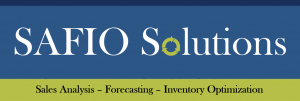As interest rates increase, what effect will this have on your company’s cash flow? The costs of carrying excess inventory will be increasing as well, impacting your company’s bottom line.
Carrying costs of inventory are the total costs of purchasing, housing, handling and accounting for depreciation of inventory. It is commonly accepted that inventory carrying costs represent about 25-30% of the inventory value on hand.
Carrying costs can be divided into three different types of costs:
- Capital costs
- Non-capital costs
- Inventory risk costs
Capital costs
Capital costs are typically the largest portion of total carrying costs. Capital costs represent the cash that is being tied up in the inventory. These costs include the money spent on the inventory, interest paid on the purchase, and the opportunity cost of the money invested in the inventory rather than other investments like mutual funds, etc. Another capital cost that is incurred, although it may be more difficult to measure, is the cost of investing in inventory rather than other areas of the company. The Weighted Average Cost of Capital (WACC) formula can be used to determine capital costs.
Non-capital costs
Non-capital costs consist of the costs associated with inventory storage space and inventory services. Theses costs include the mortgage or lease of the warehouse, depreciation of the warehouse, insurance, utilities, security, staff, equipment, and maintenance. There are also costs related to inventory control, including handling and technology, such as an inventory management system.
Inventory risk costs
Inventory risk costs vary depending on the type of product that is being held. Some products are perishable (e.g. food), some become obsolete quickly (e.g. technology). These products will have higher costs than other products. Accounting must be done for depreciation. A write-down of inventory occurs when the stock has not sold, but the market value has fallen below purchase price. A write-off occurs when the inventory is no longer sellable. Inventory risk costs also include insurance of the inventory, taxes, and shrinkage. Shrinkage can be a result of administrative errors, theft, or damage.
With the increase in interest rates, carrying costs can rise even more for a company. For this reason, it is imperative that companies optimize their inventory levels now. The inventory carrying cost savings a company can realize by using inventory optimization software can offset the costs of the tools in a short amount of time.




